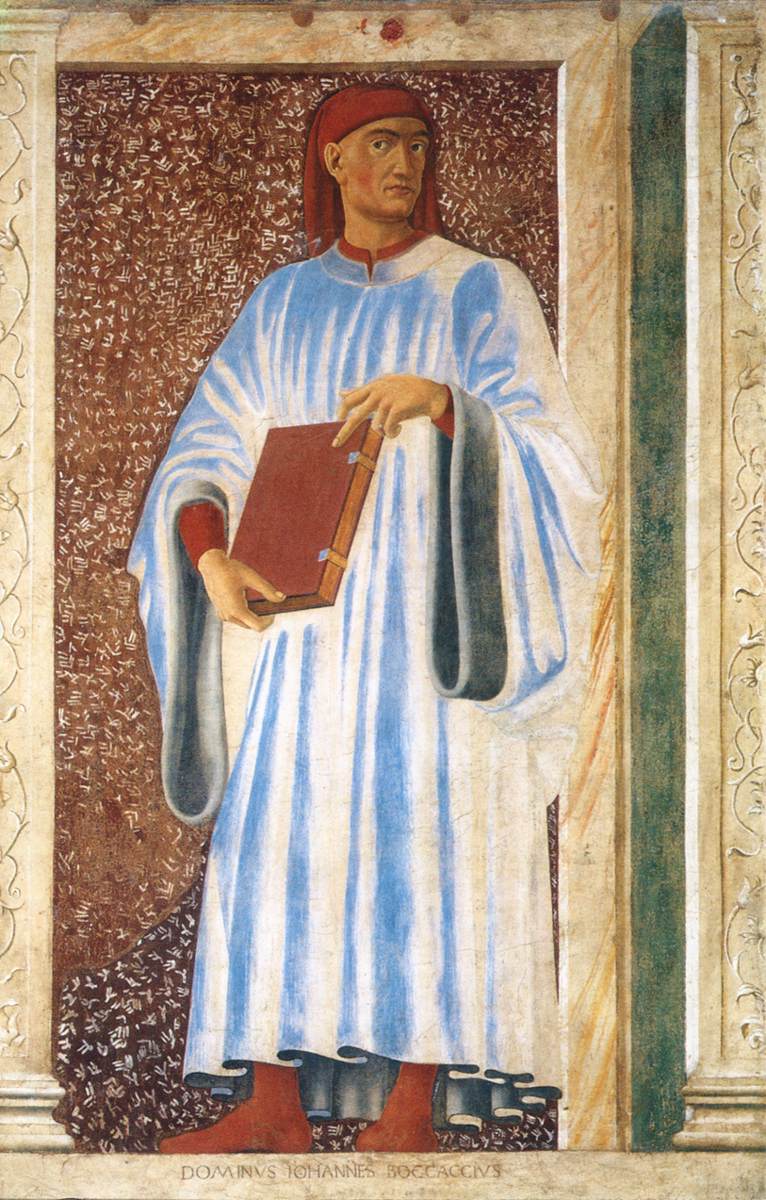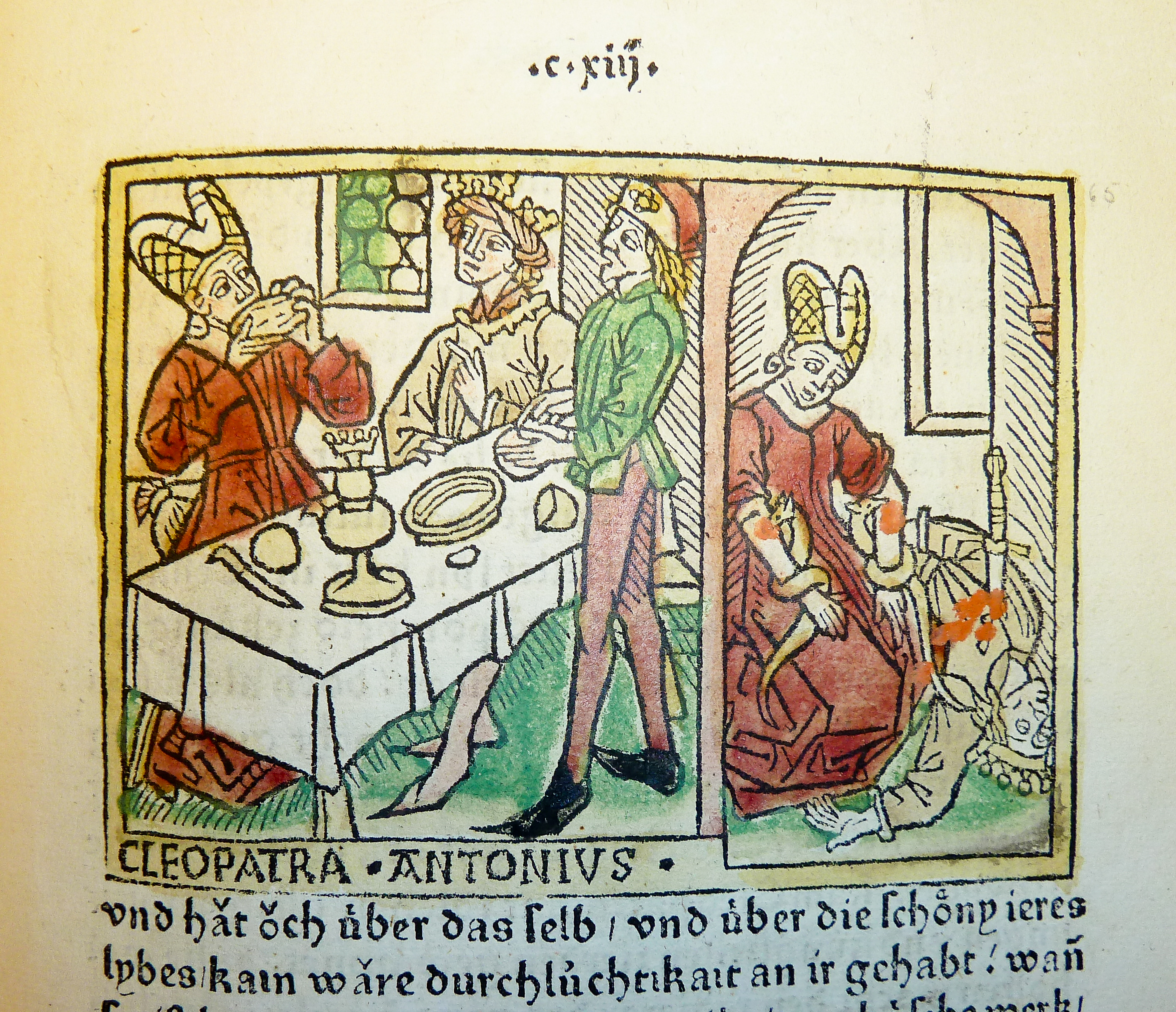|
Pyramus
In Greek mythology, Pyramus and Thisbe () are a pair of ill-fated lovers from Babylon, whose story is best known from Ovid's narrative poem ''Metamorphoses''. The tragic myth has been retold by many authors. Pyramus and Thisbe's parents, driven by rivalry, forbade their union, but they communicated through a crack in the wall between their houses. They planned to meet under a mulberry tree, but a series of tragic misunderstandings led to their deaths: Thisbe fled from a lioness, leaving her cloak behind, which Pyramus found and mistook as evidence of her death. Believing Thisbe was killed by the lioness, Pyramus committed suicide, staining the mulberry fruits with his blood. Thisbe, upon finding Pyramus dead, also killed herself. The gods changed the color of the mulberry fruits to honor their forbidden love. Ovid's version is the oldest surviving account, but the story is likely to have originated from earlier myths in Cilicia. The tale has been adapted in various forms, inspi ... [...More Info...] [...Related Items...] OR: [Wikipedia] [Google] [Baidu] [Amazon] |
A Midsummer Night's Dream
''A Midsummer Night's Dream'' is a Comedy (drama), comedy play written by William Shakespeare in about 1595 or 1596. The play is set in Athens, and consists of several subplots that revolve around the marriage of Theseus and Hippolyta. One subplot involves a conflict among four Athenian lovers. Another follows a group of six amateur actors rehearsing the play which they are to perform before the wedding. Both groups find themselves in a forest inhabited by fairies who manipulate the humans and are engaged in their own domestic intrigue. ''A Midsummer Night's Dream'' is one of Shakespeare's most popular and widely performed plays. Characters The Athenians: * Theseus – Duke of Athens * Hippolyta – Queen of the Amazons and Theseus' fianceé * Hermia – in love with Lysander * Helena (A Midsummer Night's Dream), Helena – in love with Demetrius * Lysander (A Midsummer Night's Dream), Lysander – in love with Hermia * Demetrius (A Midsummer Night's Dream), Demetrius – s ... [...More Info...] [...Related Items...] OR: [Wikipedia] [Google] [Baidu] [Amazon] |
Metamorphoses
The ''Metamorphoses'' (, , ) is a Latin Narrative poetry, narrative poem from 8 Common Era, CE by the Ancient Rome, Roman poet Ovid. It is considered his ''Masterpiece, magnum opus''. The poem chronicles the history of the world from its Creation myth, creation to the deification of Julius Caesar in a mythico-historical framework comprising over 250 myths, 15 books, and 11,995 lines. Although it meets some of the criteria for an epic poem, epic, the poem defies simple genre classification because of its varying themes and tones. Ovid took inspiration from the genre of metamorphosis poetry. Although some of the ''Metamorphoses'' derives from earlier treatment of the same myths, Ovid diverged significantly from all of his models. The ''Metamorphoses'' is one of the most influential works in Western culture. It has inspired such authors as Dante Alighieri, Giovanni Boccaccio, Geoffrey Chaucer, and William Shakespeare. Numerous episodes from the poem have been depicted in works ... [...More Info...] [...Related Items...] OR: [Wikipedia] [Google] [Baidu] [Amazon] |
Cilicia
Cilicia () is a geographical region in southern Anatolia, extending inland from the northeastern coasts of the Mediterranean Sea. Cilicia has a population ranging over six million, concentrated mostly at the Cilician plain (). The region includes the provinces of Mersin, Adana, Osmaniye and Hatay. Name The name of Cilicia () was derived from (), which was the name used by the Neo-Assyrian Empire to designate the western part of what would become Cilicia. The English spelling is the same as the Latin, as it was transliterated directly from the Greek form Κιλικία. The palatalization of c occurring in Western Europe in later Vulgar Latin () accounts for its modern pronunciation in English. Geography Cilicia extends along the Mediterranean coast east from Pamphylia to the Nur Mountains, which separate it from Syria. North and east of Cilicia stand the rugged Taurus Mountains, which separate it from the high central plateau of Anatolia, and which are pierced by a ... [...More Info...] [...Related Items...] OR: [Wikipedia] [Google] [Baidu] [Amazon] |
Romeo And Juliet
''The Tragedy of Romeo and Juliet'', often shortened to ''Romeo and Juliet'', is a Shakespearean tragedy, tragedy written by William Shakespeare about the romance between two young Italians from feuding families. It was among Shakespeare's most popular plays during his lifetime and, along with ''Hamlet'', is one of his most frequently performed. Today, the Title character, title characters are regarded as Archetype, archetypal young lovers. ''Romeo and Juliet'' belongs to a tradition of tragic Romance (love), romances stretching back to Ancient history, antiquity. The plot is based on an Italian tale written by Matteo Bandello, translated into verse as ''The Tragical History of Romeus and Juliet'' by Arthur Brooke (poet), Arthur Brooke in 1562, and retold in prose in ''Palace of Pleasure'' by William Painter (author), William Painter in 1567. Shakespeare borrowed heavily from both but expanded the plot by developing a number of supporting characters, in particular Mercutio a ... [...More Info...] [...Related Items...] OR: [Wikipedia] [Google] [Baidu] [Amazon] |
Ovid
Publius Ovidius Naso (; 20 March 43 BC – AD 17/18), known in English as Ovid ( ), was a Augustan literature (ancient Rome), Roman poet who lived during the reign of Augustus. He was a younger contemporary of Virgil and Horace, with whom he is often ranked as one of the three Western canon, canonical poets of Latin literature. The Roman Empire, Imperial scholar Quintilian considered him the last of the Latin love elegy, elegists.Quint. ''Inst.'' 10.1.93 Although Ovid enjoyed enormous popularity during his lifetime, the emperor Augustus Exile of Ovid, exiled him to Constanța, Tomis, the capital of the newly-organised province of Moesia, on the Black Sea, where he remained for the last nine or ten years of his life. Ovid himself attributed his banishment to a "poem and a mistake", but his reluctance to disclose specifics has resulted in much speculation among scholars. Ovid is most famous for the ''Metamorphoses'', a continuous mythological narrative in fifteen books written in ... [...More Info...] [...Related Items...] OR: [Wikipedia] [Google] [Baidu] [Amazon] |
Mulberry Tree
''Morus'', a genus of flowering plants in the family Moraceae, consists of 19 species of deciduous trees commonly known as mulberries, growing wild and under cultivation in many temperate world regions. Generally, the genus has 64 subordinate taxa, though the three most common are referred to as white, red, and black, originating from the color of their dormant buds and not necessarily the fruit color (''Morus alba'', '' M. rubra'', and '' M. nigra'', respectively), with numerous cultivars and some taxa currently unchecked and awaiting taxonomic scrutiny. ''M. alba'' is native to South Asia, but is widely distributed across Europe, Southern Africa, South America, and North America. ''M. alba'' is also the species most preferred by the silkworm. It is regarded as an invasive species in Brazil, the United States and some states of Australia. The closely related genus '' Broussonetia'' is also commonly known as mulberry, notably the paper mulberry (''Brousso ... [...More Info...] [...Related Items...] OR: [Wikipedia] [Google] [Baidu] [Amazon] |
Ceyhan River
The Ceyhan River (historically Pyramos or Pyramus (), Leucosyrus () or Jihun) is a river in Anatolia in the south of Turkey. Course of the river The Ceyhan River (Pyramus) has its source (known as ''Söğütlü Dere'') at a location called ''Pınarbaşı'' on the Nurhak Mountains of the Eastern Taurus Mountains range, southeast of the town of Elbistan in the Kahramanmaraş province of Turkey. According to classical references its source is at Cataonia near the town of Arabissus. Its main tributaries are called Harman, Göksun, Mağara Gözü, Fırnız, Tekir, Körsulu, Aksu (which joins Ceyhan at the outskirts of Kahramanmaraş), Çakur, Susas, and Çeperce. Its total length is . In classical times for a time it passed under ground, but then came forward again as a navigable river, and forced its way through a glen of Mount Taurus, which in some parts was so narrow that Strabo claims a dog or hare could leap across it. Its course, which to this point had been south, the ... [...More Info...] [...Related Items...] OR: [Wikipedia] [Google] [Baidu] [Amazon] |
The Legend Of Good Women
''The Legend of Good Women'' is a poem in the form of a dream vision by Geoffrey Chaucer during the fourteenth century. The poem is the third longest of Chaucer's works, after ''The Canterbury Tales'' and ''Troilus and Criseyde'', and is possibly the first significant work in English to use the iambic pentameter or decasyllabic couplets which he later used throughout ''The Canterbury Tales''. This form of the heroic couplet would become a significant part of English literature possibly inspired by Chaucer. Summary Prologue The prologue describes how Chaucer is reprimanded by the god of love and his queen, Alceste, for his works—such as ''Troilus and Criseyde''—depicting women in a poor light. Criseyde is made to seem inconstant in love in that earlier work, and Alceste demands a poem of Chaucer extolling the virtues of women and their good deeds. The incomplete nature of the poem is suggested by Chaucer's Retraction from ''The Canterbury Tales'' which calls ... [...More Info...] [...Related Items...] OR: [Wikipedia] [Google] [Baidu] [Amazon] |
Ninus
Ninus (), according to Greek historians writing in the Hellenistic period and later, was the founder of Nineveh (also called Νίνου πόλις "city of Ninus" in Greek), ancient capital of Assyria. The figure or figures with which he corresponds in Assyrian records is uncertain; an association or identification with Ninurta has been proposed. An identification with Shamshi-Adad I, Shamshi-Adad V, and/or a conflation of the two have also been suggested. In Hellenic historiography Many early accomplishments are attributed to Ninus, such as training the first hunting dogs, and taming horses for riding. For this accomplishment, he is sometimes represented in Greek mythology as a centaur. The figures of King Ninus and Queen Semiramis first appear in the history of Persia written by Ctesias of Cnidus (c. 400 BC), who claimed, as court physician to Artaxerxes II, to have access to the royal historical records. Ctesias' account was later expanded on by Diodorus Siculus. Ninus cont ... [...More Info...] [...Related Items...] OR: [Wikipedia] [Google] [Baidu] [Amazon] |
Giovanni Boccaccio
Giovanni Boccaccio ( , ; ; 16 June 1313 – 21 December 1375) was an Italian people, Italian writer, poet, correspondent of Petrarch, and an important Renaissance humanism, Renaissance humanist. Born in the town of Certaldo, he became so well known as a writer that he was sometimes simply known as "the Certaldese" and one of the most important figures in the European literary panorama of the 14th century, fourteenth century. Some scholars (including Vittore Branca) define him as the greatest European prose writer of his time, a versatile writer who amalgamated different literary trends and genres, making them converge in original works, thanks to a creative activity exercised under the banner of experimentalism. His most notable works are ''The Decameron'', a collection of short stories, and ''De Mulieribus Claris, On Famous Women''. ''The Decameron'' became a determining element for the Italian literary tradition, especially after Pietro Bembo elevated the Boccaccian styl ... [...More Info...] [...Related Items...] OR: [Wikipedia] [Google] [Baidu] [Amazon] |
On Famous Women
''De Mulieribus Claris'' or ''De Claris Mulieribus'' (Latin for "Concerning Famous Women") is a collection of biographies of historical and mythological women by the Florentine author Giovanni Boccaccio, composed in Latin prose in 1361–1362. It is the first collection devoted exclusively to biographies of women in post-ancient Western literature. At the same time as he was writing ''On Famous Women'', Boccaccio also compiled a collection of biographies of famous men,'' De Casibus Virorum Illustrium'' (''On the Fates of Famous Men''). The famous women *1. Eve, the first woman in the Bible *2. Semiramis, queen of the Assyrians *3. Opis, wife of Saturn *4. Juno, goddess of the Kingdoms *5. Ceres, goddess of the harvest and queen of Sicily *6. Minerva, Roman goddess of wisdom, justice, law, victory, and the sponsor of arts, trade, and strategy *7. Venus, queen of Cyprus *8. Isis, queen and goddess of Egypt *9. Europa, queen of Crete *10. Libya, queen of Libya *11 and 12 ... [...More Info...] [...Related Items...] OR: [Wikipedia] [Google] [Baidu] [Amazon] |










